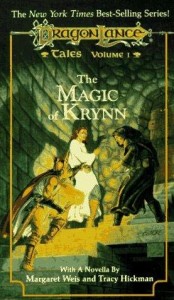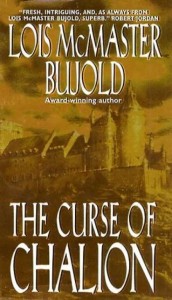So, several years after 4e came out, how is “+1 to everything every two levels” level bonus working out for everyone?
Every time you gain an even level, you have to do a lot of writing on your character sheet (or, more likely, print out a new sheet). You have to add the +1 level bonus to the attack rolls on all of your power cards, add 1 to your defenses and initiative, and update every. single. skill.
I’m starting to wonder whether you couldn’t scrap this level bonus, and just let characters’ abilities climb based on attribute boosts, enhancement bonuses, and other perks.
The level bonus has NO EFFECT on level-appropriate challenges, since the bonuses are applied to attacks and defenses (or skill bonuses and DCs). The main effect of the bonus is to make levels more meaningful. If characters or monsters have a few levels between them, they can’t reasonably compete against each other. Does this make things more fun? Let’s examine every aspect of the level-bonus rule separately.
Attack rolls and defenses: These march in lockstep, so let’s examine them together. The design intent of 4e was that monsters’ defenses would increase by 1 point every level; PC attacks would also increase by 1 every level, .5 from the level bonus and .5 from everything else (ability bonuses, enhancement bonuses, and misc etc). (In fact, the original math was slightly wrong, which means that we’re saddled with the Weapon Expertise fix.)
I don’t actually love the rapid increase of attack bonuses and defenses. Experience with 4e shows that it tends to make the most exciting fights – those against high-level opponents – drag on through miss after miss.
Is that really a fun way to handle a very tough battle? No, it isn’t, as 4e designers recognized. That’s why they developed Elite and Solo monsters, who have the increased HP and damage output of higher-level opponents, but the attacks and defenses of level-appropriate opponents.
What if we removed the level bonus from PC attacks and defenses? (We’d also have to subtract 1 point per two levels from monster attack bonuses and defenses.) Higher-level monsters would still have more HP and do more damage than lower-level foes, but their defenses wouldn’t recede quite as fast into unhittability. We’d effectively be turning every high-level monster into something more like an Elite or Solo monster.
Also, does it make fantasy-logic sense that powerful enemies are unhittable? Maybe a little bit – ogres with thick skin or fast duelists are hard to hurt. But an orc champion might not be much dodgier than an orc grunt. He can just take more damage, and behead you before you get a second attack.
Let’s try removing it!
A level 1 fighter with a +7 attack bonus (+4 strength, +3 weapon proficiency) attacks a level 8 orc. Without the level bonus, the orc’s AC is maybe 18 instead of 22. The PC hits on a 11 or better, instead of a 15 or better.
The orc strikes back! Instead of having a +13 attack bonus, he has a +9, so he hits the fighter’s AC 18 with a roll of 9 instead of needing only a 5.
Suddenly, instead of having a dull, foregone-conclusion combat round, we have some excitement around the combat rolls. Of course, the orc is still going to win the combat, because he hits like a jackhammer. His attacks still do an average of 16+ damage per attack, meaning he can bloody the fighter with one hit: while the fighter, doing possibly 9 or 10 damage per hit, is going to take a while to carve through the orc’s 90 HP. This, to me, seems like a more exciting way to model a one-sided battle.
Skills
Character skill bonuses get higher as characters gain levels, which makes sense: higher-level characters are more competent. However, the current 4e skill paradigm is that skill DCs are relative to the characters’ level anyway. A Hard climb check is always a Hard climb check, no matter the character level: there are only a handful of fixed DCs, like those for jump distance, at which higher-level characters actually improve.
If characters always face level-appropriate skill DCs, what’s the point of laboriously adding 1 to every skill bonus and DC every two levels? Let’s just forget that rigmarole and let PC skills slowly improve as they accrue attribute bonuses and skill-boosting items. We’ll subtract half-level from the giant skill DC chart as well.
This change has no downside (since it actually has virtually no mechanical effect at all), and would save a lot of erasing/reprinting of the character sheet.
Initiative
Since initiative rises steeply with level, it becomes an inevitable part of combat that higher-level opponents go before you. Does this make any sense? Why does a high-level zombie, with a speed of 4, necessarily beat you to the punch?
Also worth noting are the important areas where the level bonus is not used:
Damage Although, for instance, Strength checks and Strength-based skills increase by one point every two levels, Strength-based damage does not (which confused me when I started 4e, and probably confuses other new players). Damage increases are, instead, cooked into attacks: higher-level attacks let you roll more dice.
Hit points Characters and monsters get HP per level via a separate subsystem. The extra HP and damage given to monsters and characters, plus the non-level bonuses to other attributes, might make for more entertaining encounters between opponents of different level.











